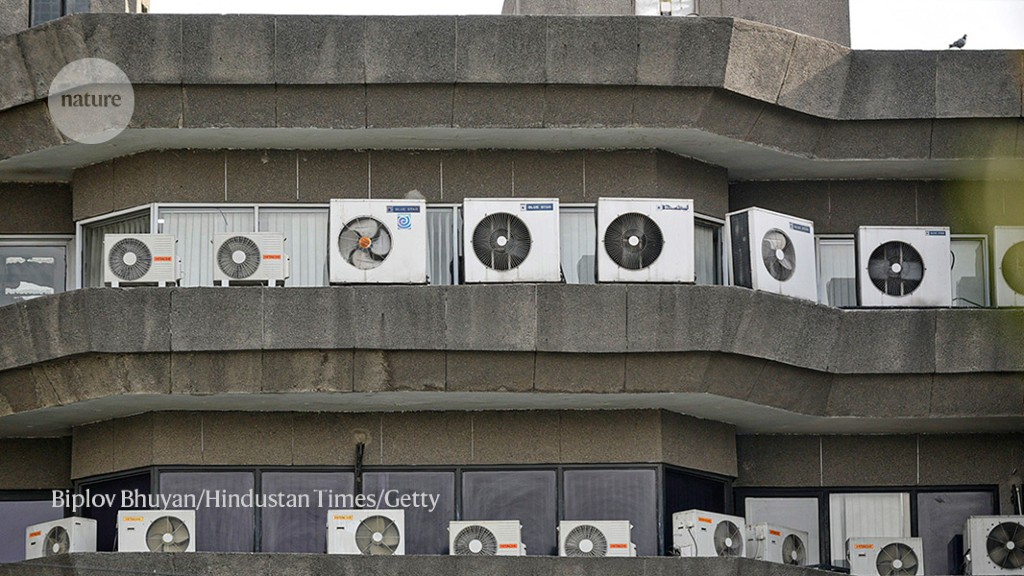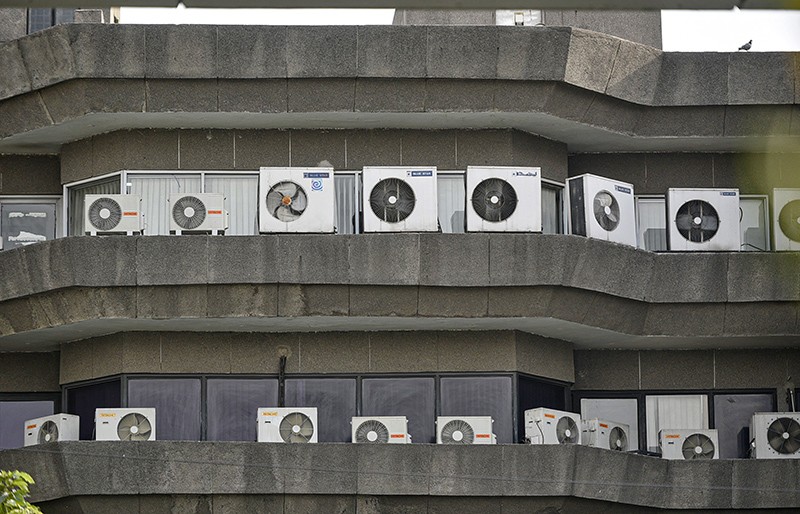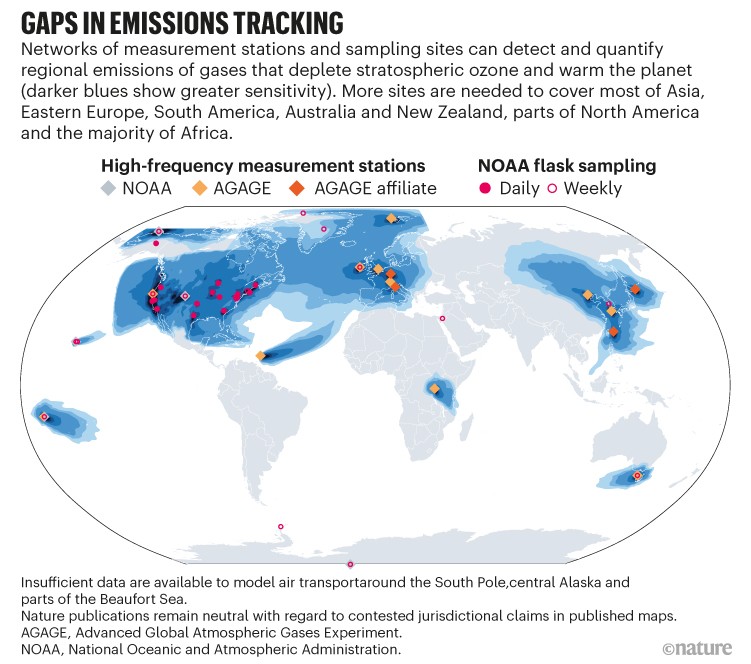In the decades after the 1987 Montreal Protocol, it seemed everything was on track to restore Earth’s protective stratospheric ozone layer. Then, in 2018, came an alarming discovery: fresh emissions of the forbidden chlorofluorocarbon-11 (CFC-11), which destroys the ozone layer. Its production and use had been banned globally in 2010.
It was a wake-up call. But this surprise will not be the last unless something is done soon to improve the monitoring of other gases that destroy the ozone layer and cause climate change.
The Montreal Protocol has been hailed as a shining example of a successful treaty: it was universally ratified. Yet, as the CFC-11 incident showed, even the best treaties cannot be upheld, or the best regulations enforced, if compliance by individual parties cannot be assured. Many local and regional air-quality policies have failed to live up to their goals for this reason. Corrective action requires knowing what is being emitted, how much and where.
The trick is to ‘trust but verify’, as is often said of nuclear disarmament. This tenet is the basis of the successful Comprehensive Nuclear-Test-Ban Treaty, which oversees the measurement and tracing of diagnostic radionuclides and isotopes in the atmosphere in key regions worldwide. Ensuring the health of our planet is as crucial as nuclear security.
Many of today’s environmental treaties rely on ‘bottom-up’ reporting. The Montreal Protocol depends on national accounting of production and consumption of chlorofluorocarbons and other halogenated gases. Of course, illegal or spurious production and emissions are not reported, as in the CFC-11 example. And what happens to the atmosphere, in the end, depends on actual emissions. Furthermore, products made in one place could eventually generate emissions elsewhere. So country-by-country reporting is an incomplete and potentially unreliable way to track emissions locally and regionally. Similarly, the Paris agreement relies on countries quantifying their own greenhouse-gas emissions.
Fortunately, emissions are also mapped and tallied ‘top-down’. Satellites and global monitoring stations give an overall picture of the abundances of gases that persist in the atmosphere. Such global monitoring can quantify mismatches between the total reported and what is accumulating in the atmosphere. But specific sources are difficult to zero-in on from space.
To take action at national or regional levels, ground-based observations are needed. Networks of such stations exist, but there are huge holes in coverage, notably in low- and middle-income regions, where emissions are likely to rise as countries develop. These monitoring gaps must be filled urgently.
Detective work
Satellite and global monitoring measurements have confirmed that the Montreal Protocol has generally worked exceptionally well for decades. Atmospheric levels of chlorofluorocarbons (CFCs) have decreased since they peaked in 19931.
But in 2018, researchers reported that the fall in atmospheric concentrations of CFC-11 started to slow in 20122. At the same time, South Korean and Japanese air-monitoring stations in the East China Sea were detecting raised levels of the gas. Models of atmospheric transport then showed that most of the new emissions detected globally were coming from eastern China3.
An investigation by The New York Times determined a key source of these emissions. It was the production of polyurethane foam insulation in China, ironically driven, in part, by pressures to improve building insulation to reduce energy consumption for heating and cooling4–6. Ongoing atmospheric monitoring has shown that these emissions have now largely ceased, both globally7 and in eastern China8.
This was great detective work. But it relied on a lucky coincidence: that the emissions came from regions upwind of monitoring stations that collect data frequently.
It is unlikely that this will be the case next time.
Keeping watch
Several observational networks currently measure the distributions and trends of atmospheric gases that deplete the ozone layer and warm the planet. They include ground-based international collaborations such as the Network for the Detection of Atmospheric Composition Change (NDACC), which uses remote optical sensors to gather information on global changes in gas concentrations. There are also aircraft-based measurement programmes. Some use civil aviation and some are government-sponsored; these can identify local emissions but are sporadic.
Satellites can track the evolution of CFC-11 and other long-lived substances in the stratosphere. They can also help in identifying local emissions of abundant greenhouse gases, including carbon dioxide and methane. But they cannot measure with sufficient sensitivity many other harmful gases close to the surface. Also, satellites pass by only periodically, and cannot see through clouds.
At present, the most precise and accurate way to quantify regional emissions is from the ground.
The main networks for such high-frequency measurements are operated by the Advanced Global Atmospheric Gases Experiment (AGAGE) international consortium, and by the US National Oceanographic and Atmospheric Administration (NOAA). These were key to discovering and mapping the unexpected CFC-11 emissions.
Such networks can be highly informative. Stations that use automated mass-spectrometry and optical technologies can now measure precise concentrations of more than 50 gases (see ‘Gas watch’) hourly or even more frequently. Alternatively, air samples can be collected in flasks and sent to central laboratories for analysis.
Observing stations are typically sensitive to emissions that occur within about 2,000 kilometres of them, as long as they are not overwhelmed by local pollution. Models that incorporate patterns of air movement, weather and variations in measured gas concentrations can then trace the emissions back to their source areas. By integrating these models over time, emissions can be mapped and quantified across a ‘footprint’ area for each station. That is what happened in the case of the CFC-11 emissions from eastern China3,8.
The problem is that there are vast blind spots. The AGAGE and NOAA stations (see ‘Gaps in emissions tracking’)9 cover large parts of the developed world. Potential emissions are relatively well sampled from areas such as eastern Asia, central North America and western Europe. Not covered are southern, western and central Asia, eastern Europe, all of South America, portions of North America, large parts of southeast Asia, Australia and New Zealand and most of Africa. It is in many of these regions that emissions are expected to increase with industrial and economic development.
To date, expansions of AGAGE, NOAA and other ground-based observational networks have been largely ad hoc. They have been driven by a combination of individual investigators’ scientific interests and needs, the funding interests and policy priorities of host and supporting entities and the availability of the necessary infrastructures and logistical support. Most stations are decades old. Just one new station has been established in the past five years, in Rwanda.
To meet the needs of the Montreal Protocol or the Paris agreement, the world needs a more systematic, coordinated international approach to building more stations. The United Nations Environment Programme, whose Ozone Secretariat is responsible for the Montreal Protocol, is a potential coordinator for such an effort for the substances that lie in its domain. The United Nations Framework Convention on Climate Change and the World Meteorological Organization could also have significant roles, particularly for emissions of potent synthetic greenhouse gases (such as fluorinated gases), which are covered by the Paris agreement.
New stations would ideally be sited downwind of emissions regions and away from polluted urban sites. To determine whether a proposed site is suitable, researchers can use Observing System Simulation Experiments. These model seasonal and annual variabilities in atmospheric transport patterns. Instruments capable of making high-frequency measurements are most useful when operated continuously in one place for a long time.
Flask sampling can be used to augment coverage in areas of interest. Flask samples measured in central laboratories can also spot and correct systemic biases between different stations or programmes. Rigorous calibration, validation and standardized techniques are all needed to produce high-quality data for scientific analysis and policy. Most importantly, these data and their interpretive algorithms must be openly available for use by policymakers, regulators and the public, as is the case with the AGAGE and NOAA networks.
We estimate that adding approximately two dozen well-chosen stations to the existing networks would provide good regional coverage around the globe. The stations would monitor emissions inside their national borders, and those in neighbouring countries. This would build international confidence in the global network.
Money well spent
What would two dozen more stations cost? About US$35 million to establish, plus $4 million to $5 million per year of operation. We estimate that it takes around $1 million to establish a high-frequency measurement station, plus about $400,000 for the instrumentation and ancillary equipment. Annual operating costs are around $200,000 per station, depending greatly on personnel costs. A philanthropic organization could, in theory, fund such a programme and thus also ensure its independence from national bias.
Compared with what is at stake, this price tag is minimal. Because many deployments would probably be in low- or middle-income countries, they would also build scientific capacity there. This could help to form a foundation to expand other observational and modelling capabilities in these regions, including those related to climate.
The 80 atmospheric observation stations of the Comprehensive Nuclear-Test-Ban Treaty have successfully monitored the world and warned of nuclear releases for decades. A similar network to measure and model regional emissions of a broad range of dangerous gases is crucial to responsible environmental policy and stewardship.
We cannot manage what we cannot measure. An investment in more ground-based, high-frequency monitoring stations will pay great dividends in the long run. It is a must for ensuring accountability under the Montreal and Paris treaties.







More News
Anglo-American bias could make generative AI an invisible intellectual cage
I had my white colleagues walk in a Black student’s shoes for a day
The immune system can sabotage gene therapies — can scientists rein it in?